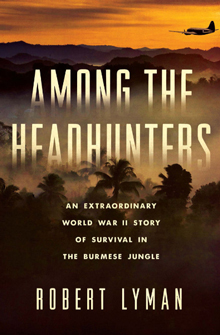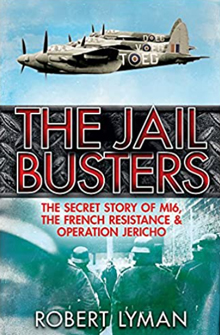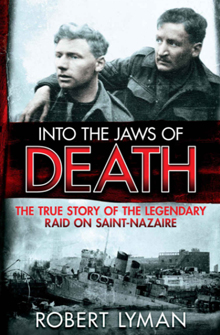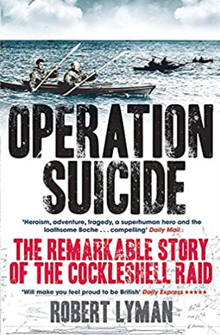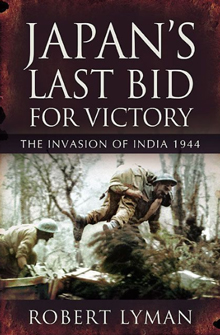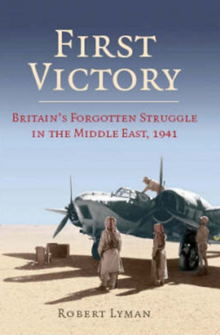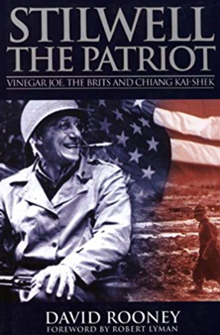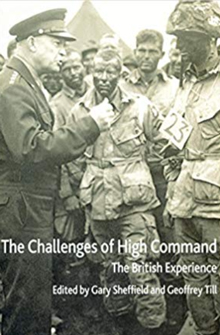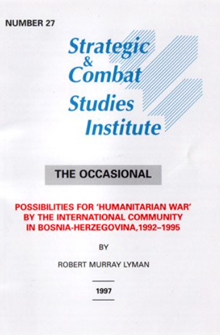Articles
Click on the links below to read the full article
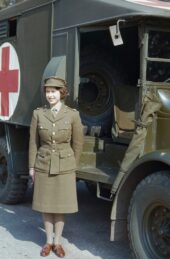

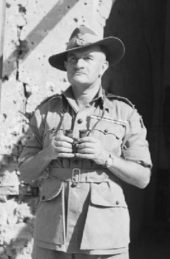
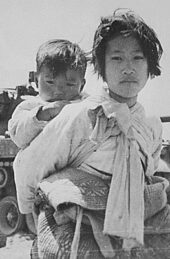
Book Reviews

 Gordon Corrigan is a historian and writer, and author of The Second World War: A Military History.
Gordon Corrigan is a historian and writer, and author of The Second World War: A Military History.
 Conquer We Must: A Military History of Britain, 1914-1945, by Robin Prior is out now and published by Yale University Press.Robert Lyman is the author of A War of Empires.
Conquer We Must: A Military History of Britain, 1914-1945, by Robin Prior is out now and published by Yale University Press.Robert Lyman is the author of A War of Empires.
 Supremacy at Sea: Task Force 58 and the Central Pacific Victory by Evan Mawdsley is published by Yale University Press.
Supremacy at Sea: Task Force 58 and the Central Pacific Victory by Evan Mawdsley is published by Yale University Press.
 Gordon Corrigan is a historian and writer, and author of The Second World War: A Military History.
Gordon Corrigan is a historian and writer, and author of The Second World War: A Military History.
Jack Bowsher has set out in this book – his first – to reprise the role of armour in the Burma campaign. He has achieved much more, however, as this excellent book is an accessible study of the campaign as a whole. It has much to recommend it. The fruit of lots of good research in the archives for primary sources, as well as in books for the memoirs of men who served in tanks in the Far East, Bowsher has produced not merely a good summary of the campaign, seen through the gun sights of a Stuart, Valentine, Lee, Grant or Sherman tank, but a rattling good story as well. The memoirs of the time from tankmen are limited, but he’s managed to get hold of them all, using them to provide really excellent accounts of the fighting, including the only real tank on tank action of the war, at Tamu in March 1944. The book is written with some panache as well. Bowsher isn’t reluctant to hide his opinions and they’re pretty rational. This certainly doesn’t feel like his first book. He writes with the tautness of a literary veteran, keeping his arguments tight, his sentences short and with an eye on ensuring that his observations about the campaign and its key personalities are judiciously mixed with a series of brilliant first-hand stories of men who were there. It really is, as James Holland says in his introduction, ‘Superbly researched and compellingly told.’
The only criticism is that there is not much – or enough – about Japanese armour, but this is a very minor quibble, given the insignificant role that armour played in Japanese tactics, a major failing in their way of war.
The very good news is that this foray into writing military history has energised Bowsher to write another book, being published (I hope) by Chiselbury in 2025. The subject? He’s going to develop Chapter 13 – Thunder Run to on Meiktila – into a full blown account of the 1945 campaign. Bravo. 2025 is the 80th anniversary of Slim’s last great campaign in the Far East, one in which the Burma Area Army of General Kimura was savaged by a triumphant 14th Army led, from the front, by tanks of both British and Indian Armies. I, for one, can’t get enough of them, and look forward to Bowsher’s next instalment with eagerness. So should you.
 Forgotten Armour: Tank Warfare in Burma, by Jack Bowsher is out now and published by Chiselbury.Robert Lyman is the author of A War of Empires.
Forgotten Armour: Tank Warfare in Burma, by Jack Bowsher is out now and published by Chiselbury.Robert Lyman is the author of A War of Empires.
This brilliant book is what you get when you marry two first-class historians (and communicators) of the Second World War. I enjoyed its pace, its storytelling and the sheer enthusiasm these two characters have for their subject. Despite its subject matter, it was fun. The combination of Murray and Holland is a marriage made in heaven, as afficionados of the We Have Ways phenomenon will readily attest.
Not long-ago James asked me how I managed to collaborate with someone else in writing a book: my last two books have been written with General Lord Dannatt. I told him that it was easy, as it halved the workload and doubled the brain power required to produce 120,000 reasonably sensible words every 12-months. He's clearly taken my advice, and this is the result.
The subject is quite brilliant too. How many new ways can one find to look at the greatest ever drama in human history? Well, this spectacular duo has found it: the ending of the war, rather than its beginning or its middle (both of which James has dealt with in detail in the two volumes of his War in the West). It's always the hardest thing to do (ending a war that is; starting one is quite easy in comparison), so it's fascinating that so few historians have ever examined the end of the Second World in its granular detail, from a holistic (i.e. all the surrenders taken into consideration) and a narrative (storytelling) perspective. The secret to this book's success is that both writers have grasped its sheer human drama. Imagine what General Wainwright must have been thinking when he was mobbed by 100,000 compatriots on the White House lawn after his three years of brutal captivity? Yet he shed tears for General Yamashita when the Tiger of Malaya was marched of to his trial and execution. Extraordinary.
James Holland has demonstrated that he is as forensic an historian as any in the hallowed halls of academia (look at Italy's Sorrow for an example) while Al Murray is the perfect chatty man (or pub landlord?), without losing any profundity by being so. They've both perfected the art of telling stories. The fusion of these two voices gives us a fast-paced human-filled drama of the road to the end of the war across the globe (from Rome to Berlin, Luneburg Heath and Tokyo) through many of the voices of many of those involved, high and low. It's not comprehensive (there is no surrender of the Japanese to Marshal Zhukov in Manchuria for instance) but this isn't a criticism: there is only so much of this story of the end of the way one can tell, and writers (as I regularly insist) are their own masters: they are free to pick and choose what stories they tell. But it's the contrasting stories of Wainwright contrasting the nasty fascists Donitz, Kesselring, Keitel and Kaltenbrunner that had me hooked. But the heroes were those who saw, and survived to tell their stories: Yelena Kagan, Helmut Altner, Hugo Gryn, Alan Moskin and many others all had me spellbound. After all, war is primarily about the people who are forced to fight it, especially those who do so out of duty or service rather than passion or nationalist or ideological conviction. Holland and Murray have scooped the prize on telling person-centric narratives about the greatest drama on earth. Bravo! The only problem? I'm now looking forward to the next foray, knowing that it will be at least a year away. Come on boys!
 Robert Lyman is a historian and the author, with Richard Dannatt, of Victory to Defeat: The British Army 1918-40.
Robert Lyman is a historian and the author, with Richard Dannatt, of Victory to Defeat: The British Army 1918-40.
What British diplomat earned his place in history by penning a note to his superior in London commenting mischievously on the name of his Turkish counterpart, Mustapha Kunt? You've guessed it: precisely the same man that doesn't fit one's usual picture of a British diplomat, Sir Archibald Clark Kerr, GCMG, His Britannic Majesty's Ambassador Extraordinary and Plenipotentiary to the Kremlin. Giles Milton's latest and eminently readable book is full of a cast of sometimes larger-than-life characters that you'd expect to see in a sexed-up account the war presented by Hollywood. It is one of the many things that makes the story he tells so fascinating.
It's one we think we know well. Bad guy (Hitler) seals pact with another bad guy (Stalin) to divide up Europe. Bad guy turns on the other, just as gangsters always do. All of a sudden the enemy of our enemy becomes our friend and we have to decide what to do about it. By humanising this great reversal by describing the interactions of East and West via the primary interlocuters we get a bottom-up or person-to-person view of the weird alignment of East and West in the fight against the Nazi enemy. Winston Churchill, British prime minister since the dark days on May 1940, had been a vociferous anti-communist all his political life, yet immediately determined on hearing of the German onslaught against the USSR that an alliance between Britain and the USSR (the USA was not to join the war until the end of the year) was essential - despite the starkness of their different politics - to defeat the Nazi monster. It was certainly a marriage of convenience but shows Churchill at his most strategic, and his most brilliant.
Milton's genius is to explain how Churchill and Stalin, despite their distaste for each other, created a personal modus vivendi that allowed the common cause - the destruction of Nazi Germany- to become a joint crusade, at least until the war ended and mutual animosities could be resumed.
This brilliant book uncovers the intimate story of the Western Allies relationship with Stalin and his General Staff. It demonstrates that the USSR understood clearly the extraordinary power the alliance brought to the war. We can safely ignore those today who claim that it was the Soviet Union which won the war on its own. The Soviets knew that this was a partnership.
Milton records how both Stalin and his General Staff were astonished at the scale and brilliance of the five-beach assault on Normandy on 6 June 1944, congratulating the Allies on an event that Stalin described as superlative, 'unparalleled in history.' Stalin viewed D-Day as one of the greatest military endeavours of all time. He also acknowledged that the USSR wouldn't have won the war without US and British muscle, Who can recall that between June 1941 and spring 1944 the UK had shipped more than a million tons to the Soviet Union, including 5,800 planes and 4,300 tanks? Milton does.

Robert Lyman is a historian and the author, with Richard Dannatt, of Victory to Defeat: The BritishArmy 1918-40.

Keith Lowe has built a well-deserved reputation in recent years as a chronicler of the interface between military operations and civil society, especially once the fighting on a battlefield has ended. For instance, his ‘Savage Continent’ tracked the long, wearying aftermath of the Second World War in Europe. It is not something that normally interests those concerned only with the stories in men in war, or of those who like to chronicle the movement of the big battalions, but I suggest this is where these folk are really missing out: Lowe reminds all readers that its rare for battlefields not to be full of terrified, starving, bombed innocents trying to survive amidst the horror, brutality, violence and squalor of war. In other words, war is something that enjoys holding the unarmed in its embrace as much as it likes clasping those in uniform. In another earlier book Lowe investigated the impact of the Bomber Command assault on the ancient Hanseatic League city of Hamburg in July 1943. He’s now turned his pen to tracing the story not of a city – Naples, in 1944 – but more accurately the people who lived in and transited through this city, in 1944. This magnificent book is a story therefore about people, and it is this which gives the book its great strength.
We start, sensibly enough, with the Allies – the Americans and British – who draw up plans to invade Italy and make their landings at Salerno in late 1943. This then introduces us to the Axis forces – the Italians on the verge of collapse and surrender and the Germans, forbidden by Hitler from doing anything other than fighting for every inch of territory with every pint of their – and other’s – blood. Last but by no means least we are introduced to the poor benighted souls who in live in and around Naples itself and who have to find a way to survive the inclemency of war. The book describes how all three groups of people interface with each other. The focus isn’t on the battle, but on how the Germans treat the city first, and then the Allies. It won’t come as a surprise that the Germans were the bad guys. The shocking destruction of the city and the deliberate humiliation of its population was a visceral riposte by the Nazis to the perfidious Italians who had deserted them in their hour of need by surrendering. No deprivation was too much for the first city in Italy to be given the scorched earth treatment. The ugly brutality of human vengeance of the kind wrought upon the helpless citizens of this ancient city is horrible to behold.
The Allied occupation comes as something of a comedic relief. The liberators came prepared to fight the Germans, not rebuild the water and sewerage systems of the city but needs must, and Allied engineers did wonders to reverse and repair the most dreadful of the Germanic depredations. It was horrifying to read for instance of the land mines the Germans planted liberally throughout the city, on long time delay fuses, designed to explode long after their departure. The rest of the book – apologies, but this review is outrageously word-capped – tells the fascinating story of the ordinary folk, together with the harlots, pimps and scoundrels who lived through these desperate, and hungry, days. It’s compelling and difficult to put down.

Robert Lyman is a historian and the author, with Richard Dannatt, of Victory to Defeat: The British Army 1918-40.

 Dr Robert Lyman MBE FRHistS served with the author in Belfast in 1983. His life, and that of his ‘brick’, was saved by one of the ECM devices described in this book.
Dr Robert Lyman MBE FRHistS served with the author in Belfast in 1983. His life, and that of his ‘brick’, was saved by one of the ECM devices described in this book.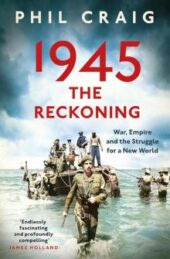

Robert Lyman is a historian and the co-author of .
Author Interviews



Mountbatten inspecting sailors in February 1942

Canadian dead on Blue beach.
 Patrick Bishop is the author of Fighter Boys: The Pilots Behind the Battle of Britain and 3 PARA: Afghanistan 2006. Operation Jubilee, Dieppe 1942: The Folly & The Sacrifice is his latest book.Robert Lyman is a historian and writer, and author of A War of Empires: Japan, India, Burma & Britain 1941-45.
Patrick Bishop is the author of Fighter Boys: The Pilots Behind the Battle of Britain and 3 PARA: Afghanistan 2006. Operation Jubilee, Dieppe 1942: The Folly & The Sacrifice is his latest book.Robert Lyman is a historian and writer, and author of A War of Empires: Japan, India, Burma & Britain 1941-45.
 Courage and Other Broadcasts by Field Marshal Sir William Slim, with an introduction by Robert Lyman, is out now and is published by Sharpe Books.
Courage and Other Broadcasts by Field Marshal Sir William Slim, with an introduction by Robert Lyman, is out now and is published by Sharpe Books.




